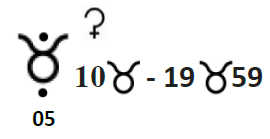CYBELE

Cybele (sib-uh-lee) also known as Kybele (kih-buh-lee), Kubaba, Agdistis, and Magna Mater (Great Mother) was the Phrygian goddess of nature, wilderness, fertility, sexuality, and protection. Her worship travelled from Phrygia (a kingdom within Anatolia, which sits in present day Turkey) to mainland Greece, and eventually to Rome, where she became very popular. In fact, the Cult of Cybele was on par with the Cult of Isis and the Cult of Mithra, making her a very powerful goddess indeed. Cybele didn’t have much of a following in Greece, as the Greeks equated her with Rhea, Demeter, and even Artemis. It was in Rome that the goddess gain major recognition.
So how did Cybele get to Rome and why? Well, back in Phrygia, one of the most sacred forms of the goddess was a black meteorite. So, when Rome was besieged by both falling meteorites and the Carthaginians, they sought the advice of the Sibyl (oracular priestess). The pronouncement was definitive, the meteorite goddess needed to be brought to Rome. I suspect this abduction was less than welcomed by the Phrygians but, whatever the politics and arrangements, Cybele did move to Rome. (As a side note, I find it interesting that the names of the oracular priestess (Sibyl) and the subject of her oracle (Cybele) share a very similar name, at least in pronunciation.)
Cybele was frequently depicted seated on a throne flanked by lions, or riding a chariot drawn by lions, though the cats were originally leopards and sometimes leopards giving birth. It is most likely the change was a way for the Romans to highlight both the power and rank of the goddess and, at the same time, remove her more explicit femininity. The lion is also the leader of a pack, while other wildcats are mostly solitary. The leopard tied the goddess to her wild dignity and her preferred company of animals and nature, but in Rome she needed to be a goddess of the people. To that end, the Roman depictions also show Cybele wearing a turreted crown, representing her defence and protection aspects, elevating her to Magna Mater (Great Mother) an important symbol of the Roman Empire.
As would be expected of a goddess this ancient, her mythology is varied with the full truth of her story lost in time. Variations on her name, her origins, her parentage, her love life, and her rituals depend on the culture and storyteller. However, the most popular and reasonably consistent mythology involves the death and resurrection of her beloved consort, Attis
(equivalent to the Sumerian Dumuzi, the BabylonianTammuz, and the Greek Adonis).
Attis is the god of vegetation, sacrificed each harvest and reborn each spring. There are variations of his myth too, but the theme of death and resurrection is consistent. So, here is the gist. Cybele falls in love with Attis but he either loves another or is unfaithful to the goddess. In her jealousy, Cybele drives Attis mad. Attis then runs into the wilderness, castrates himself, and bleeds to death under a pine tree. Cybele mourns his death, is repentant of her anger and subsequent actions, and Attis is reborn. Sometimes, the two are in love and Cybele’s disapproving parents kill Attis. And sometimes, while the two are in love, Attis is promised to another so he kills himself instead of being unfaithful to the goddess. No matter the instigating event, in all versions Attis dies and returns from the dead.
As for celebrations and worship, again there is debate about what this looked like in the Cybele’s native land. Some sources claim the orgiastic rites, ritual prostitution, and self-castration came from Phrygia, while others claim those were a later addition, ironically by the much more conservative Romans (perhaps in desperate need of catharsis).
Either way, we do know that – despite it being unsanctioned – Cybele was honoured and celebrated in Rome with orgiastic frenzies (music, drumming, and dancing), in which male participants then castrated themselves in honour of Attis, and as a way to be closer to the Divine Feminine. The Galli were eunuch priests of Cybele who dressed in women’s clothes, took on female identities, and did everything they could to emulate the feminine. Roman law decreed that Roman men could not participate in these rites, or become priests of Cybele, so the Galli were either non-Romans or slaves. As her cult and popularity grew in the Empire, the Taurobolium was instituted where, instead of human castration, a bull was castrated and his blood was used to bless and initiate participants into the Cult of Cybele.
No matter her origins, the essence of Cybele’s energies is consistent: physicality, sexuality, wilderness, nature, death, resurrection, and castration as a means of both death and complete devotion to the Goddess. While Cybele isn’t the type of mother who will comfort and console, as an Earth Mother she represents fertility, the body, and nature…and the full embodiment of Taurus and Beltaine.
